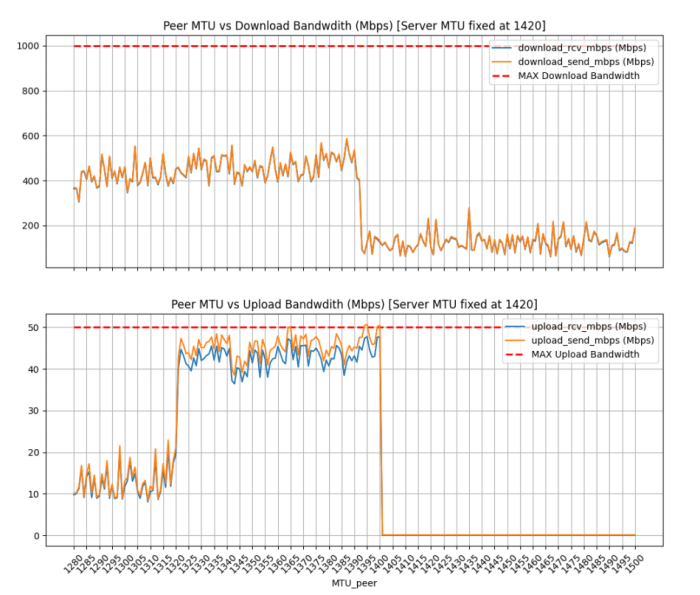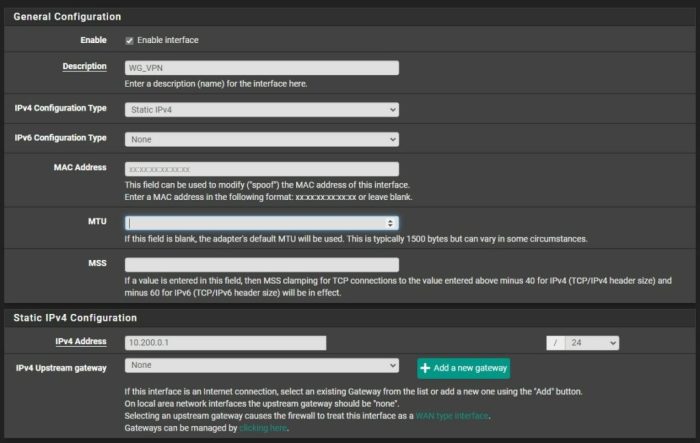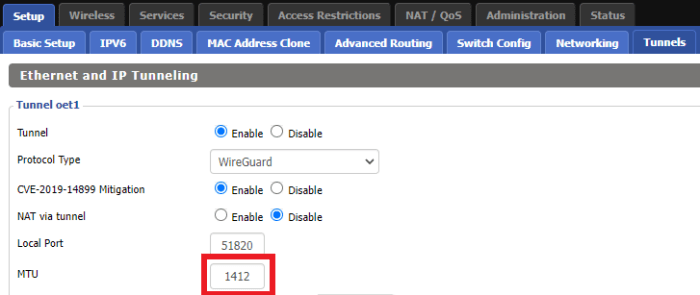In the realm of virtual private networks (VPNs), WireGuard stands out as a cutting-edge solution that prioritizes speed, security, and ease of use. One crucial aspect of WireGuard configurations is setting the Maximum Transmission Unit (MTU), a parameter that significantly influences network performance and connectivity.
Understanding and optimizing MTU is essential for maximizing the capabilities of WireGuard and ensuring seamless communication across diverse network environments.
This comprehensive guide delves into the intricacies of WireGuard MTU, exploring its impact on performance, interoperability, and troubleshooting. We will provide step-by-step instructions on setting MTU, discuss best practices, and examine advanced considerations to empower you with the knowledge and skills necessary to optimize your WireGuard configurations.
Understanding WireGuard MTU
In networking, Maximum Transmission Unit (MTU) refers to the largest size of data that can be transmitted in a single packet. It plays a crucial role in WireGuard configurations, influencing the performance and connectivity of the VPN tunnel.
WireGuard uses MTU to fragment larger packets into smaller chunks for transmission over the network. The optimal MTU value depends on various factors, including the underlying network infrastructure and the path taken by the packets. Setting an appropriate MTU ensures that packets are not dropped or fragmented excessively, optimizing the efficiency and reliability of the VPN connection.
Impact of MTU on WireGuard Performance
The MTU setting can significantly impact WireGuard performance. If the MTU is set too low, packets may be fragmented excessively, leading to increased overhead and reduced throughput. Conversely, setting the MTU too high can result in packets being dropped due to exceeding the maximum size allowed by the network infrastructure.
Finding the optimal MTU value requires careful consideration of the network environment and testing different settings to determine the value that provides the best balance between performance and reliability.
Setting WireGuard MTU
Setting the MTU for WireGuard interfaces is crucial for ensuring optimal network performance. This guide provides step-by-step instructions and discusses the considerations involved in setting MTU effectively.
There are two primary methods for setting MTU:
Command Line
- Use the ip link set command with the mtu parameter. For example:
ip link set dev wg0 mtu 1420
Configuration Files
- Edit the WireGuard configuration file (typically located at /etc/wireguard/wg0.conf) and add the MTU parameter. For example:
[Interface]MTU = 1420
When setting MTU, consider the following:
- The MTU should be set to the lowest common denominator (LCD) of all network interfaces involved in the connection.
- A larger MTU can improve performance but may lead to fragmentation if the underlying network cannot handle it.
- A smaller MTU can reduce fragmentation but may limit performance.
MTU and WireGuard Performance

MTU plays a crucial role in optimizing WireGuard performance. It directly impacts factors such as latency, throughput, and packet loss, affecting the overall user experience. Understanding the relationship between MTU and WireGuard’s performance is essential for network administrators.
When the MTU is set too low, it can lead to excessive fragmentation of packets, increasing latency and reducing throughput. On the other hand, if the MTU is set too high, it can result in packet loss due to dropped packets that exceed the maximum size.
Therefore, it’s important to find the optimal MTU value that balances these factors.
Optimizing MTU for Improved WireGuard Performance
- Path MTU Discovery (PMTUD): WireGuard supports PMTUD, which automatically discovers the optimal MTU for the path between two endpoints. This eliminates the need for manual MTU configuration in most cases.
- Manual MTU Configuration: If PMTUD is not enabled or does not work correctly, you can manually configure the MTU. Use the “ping
-s ” command to test different packet sizes and find the largest size that does not result in fragmentation or packet loss. - Adjusting MTU for Different Network Interfaces: Different network interfaces may have different MTU requirements.Check the MTU settings for each interface and adjust them accordingly.
- Consider the Underlying Network: The MTU should be set to the smallest MTU of all the network segments between the two endpoints. This ensures that packets can traverse the entire path without fragmentation.
MTU and WireGuard Interoperability
The MTU plays a crucial role in ensuring seamless interoperability between WireGuard devices and other networks. When the MTU is set too low, it can result in fragmentation of packets, leading to performance degradation and potential connection issues.
To troubleshoot MTU-related interoperability issues, it is essential to determine the optimal MTU for the network environment. This can be achieved through path MTU discovery (PMTUD) mechanisms, such as ICMP fragmentation needed (DF-bit) messages or Path MTU Discovery Protocol (PMTUD).
Best Practices
To ensure seamless interoperability, follow these best practices:
- Configure the MTU to the lowest common denominator (LCD) of all devices and networks involved in the connection.
- Use PMTUD mechanisms to dynamically adjust the MTU based on network conditions.
- Test the connection with different MTU settings to identify the optimal value.
- Monitor network traffic for signs of fragmentation or packet loss, which may indicate an incorrect MTU setting.
Troubleshooting MTU Issues

Identifying and resolving MTU-related problems in WireGuard configurations is crucial for optimal network performance. This section presents a comprehensive guide to troubleshooting common MTU issues, providing step-by-step procedures and advanced techniques for complex problems.
Identifying Common MTU Issues
Several factors can contribute to MTU-related issues in WireGuard:
- Mismatched MTU settings: Incorrect MTU values configured on either the client or server can cause fragmentation and packet loss.
- Network path limitations: Intermediate network devices along the path may have lower MTU values, leading to packet fragmentation.
- Firewall rules: Firewall rules that block or alter packets based on size can interfere with MTU settings.
- OS limitations: Some operating systems have default MTU values that may not be optimal for WireGuard.
Advanced MTU Considerations
Beyond basic MTU settings, understanding advanced concepts like fragmentation and path MTU discovery is crucial for optimizing WireGuard configurations. These concepts can impact performance and interoperability, and it’s essential to address them in complex network scenarios.
Fragmentation
Fragmentation occurs when packets exceed the MTU of a network interface. WireGuard supports fragmentation, but it can degrade performance. To minimize fragmentation, it’s recommended to use an MTU that aligns with the smallest MTU along the network path.
Path MTU Discovery
Path MTU discovery (PMTUD) is a mechanism that dynamically adjusts the MTU based on the MTU of the path between two endpoints. WireGuard supports PMTUD, which can help prevent fragmentation and improve performance. However, PMTUD can introduce latency and should be used cautiously in environments where latency is critical.
Best Practices for MTU Configuration

Optimizing MTU settings is crucial for maximizing WireGuard performance and minimizing packet fragmentation. Here are some best practices to guide your configuration:
Selecting Appropriate MTU Values
Choosing the right MTU value depends on the network conditions. Consider the following factors:
- Network interface capabilities: Check the MTU supported by your network interfaces.
- Path MTU: Determine the minimum MTU along the entire path between endpoints.
- Packet size: Consider the size of the packets being transmitted.
Testing and Monitoring MTU Settings
After configuring MTU, it’s essential to test and monitor the settings to ensure optimal performance. Use tools like ping and traceroute to check for packet fragmentation and adjust MTU accordingly.
MTU in WireGuard Use Cases
MTU (Maximum Transmission Unit) plays a critical role in optimizing WireGuard performance in various use cases. Understanding the impact of MTU on different scenarios can help administrators fine-tune their configurations for maximum efficiency.
Remote Access VPNs
In remote access VPN scenarios, MTU is crucial for ensuring seamless connectivity and preventing packet fragmentation. When users connect to a remote network over a public internet connection, the path may involve multiple network hops, each with its own MTU.
Setting the MTU too high can lead to packet fragmentation, while setting it too low can limit throughput.
Site-to-Site VPNs
Site-to-site VPNs often connect two or more physical locations over dedicated or leased lines. In these scenarios, MTU optimization is essential for maximizing bandwidth utilization. A high MTU allows for larger packets to be transmitted, reducing the number of packets and overhead associated with the VPN connection.
Cloud Connectivity
When connecting to cloud providers, MTU optimization is important for achieving optimal performance. Cloud environments typically have high-bandwidth connections with low latency, allowing for larger MTU values. By setting the MTU appropriately, administrators can maximize the throughput of data transfers between on-premises networks and cloud resources.
Conclusion
In this article, we’ve delved into the significance of MTU in WireGuard configurations. We’ve explored the concept of MTU, its impact on performance and interoperability, and the best practices for configuring it effectively. By understanding and implementing the discussed concepts, you can optimize your WireGuard setups for reliable and high-performance network connections.
Remember, proper MTU configuration is crucial for maximizing the efficiency of your WireGuard connections. Take the time to determine the optimal MTU settings for your network and apply the best practices Artikeld in this article. By doing so, you’ll ensure seamless and secure data transmission over your WireGuard network.
Summary
Mastering WireGuard MTU is not merely a technical exercise; it is an art that unlocks the full potential of this remarkable VPN solution. By embracing the concepts and best practices Artikeld in this guide, you can ensure optimal performance, seamless connectivity, and a secure and reliable networking experience.
As the world of networking continues to evolve, WireGuard MTU will remain a cornerstone of efficient and secure communication. Embrace it, experiment with it, and witness the transformative impact it can have on your network.